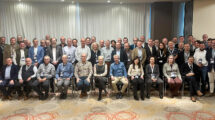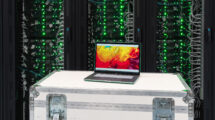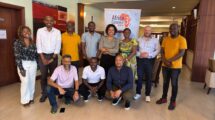This article was originally published on the AfricaConnect3 website.
African Research and Education Networks (RENs) are crucial in achieving the Sustainable Development Goal (SDG) 17. Goal 17 focuses on strengthening global partnerships for sustainable development. It recognises that achieving the other Global Goals requires a collaborative, sustainable effort between governments, non-governmental organisations, the private sector, civil society organisations, and individuals. RENs are vital to this effort, providing the necessary infrastructure and support for research and education collaborations that span national and international boundaries.
African RENs are supporting SDG 17 by fostering international partnerships. RENs connect researchers and educators across borders, facilitate the exchange of knowledge and expertise, and promote collaboration on research and education projects. This collaboration is helping to build bridges between countries and cultures, promoting mutual understanding and respect, and strengthening global partnerships for sustainable development. In 2021 at Trieste, ASREN signed an MoU with RedCLARA and La Referencia to adopt the latter’s open-source discovery software to enhance open science and the visibility of Arab content. This partnership means Arabic science knowledge will be readily available and accessible for further research and decision-making.
RENs also support SDG 17 by facilitating access to research and education resources. By connecting universities, research institutions, and other educational organisations within a country and across borders, NRENs are enabling researchers and educators to collaborate on projects that can have a global impact. This collaboration can lead to discoveries, innovations, and solutions to global challenges, which can help achieve multiple SDGs.
For instance, African RENs are advancing in their collaboration with the Group on Earth Observation (GEO) to provide the requisite support to earth observation (EO) research communities in Africa. This support which will come in the form of connectivity, identity and access management, collaboration tools, data storage etc., will help to achieve much in various fields such as remote sensing, geospatial analysis, climate science, environmental science, geology, agriculture, and urban planning. RENs will play a role in the Global Earth Observation System of Systems (GEOSS) through this collaboration and its ensuing outcomes. GEOSS links Earth observation resources worldwide across multiple societal benefit areas and makes those resources available for informed global and local decision-making.
Many SDGs require accurate and timely data to measure progress and identify areas where action is needed. RENs enable data to be collected and shared across organisations and borders, which is essential for identifying trends, measuring progress, and developing evidence-based policies and programs. RENs also provide the necessary infrastructure for data sharing and analysis, which is critical for achieving SDG 17.
In 2021, WACREN signed an MoU with RUFORUM to collaborate in LIBSENSE to provide contemporary platforms to enable agriculture research data sharing and open-access publishing. This collaboration and the ensuing outcomes of activities will avail requisite knowledge for decision-making on food security, improved nutrition and sustainable agriculture (Goal 2 – Zero Hunger).
Another way that RENs are supporting SDG 17 is by fostering international partnerships. RENs connect researchers and educators across borders, facilitate the exchange of knowledge and expertise, and promote collaboration on research and education projects. This collaboration is helping to build bridges between countries and cultures, promoting mutual understanding and respect, and strengthening global partnerships for sustainable development. In 2021 at Trieste, ASREN signed an MoU with RedCLARA and La Referencia to adopt the latter’s open-source discovery software to enhance open science and the visibility of Arab content. This partnership means Arabic science knowledge will be readily available and accessible for further research and decision-making.
Furthermore, RENs, by nature, are a manifestation of the collaborative efforts of their members to gain access to development opportunities that would otherwise not have been achievable. An example of this is the AfricaConnect project which was made possible by collaboration amongst all the 3 RRENs of Africa and their European counterpart GEANT. A project which has since seen the development of the entire research and education internet network in Africa. RRENs and their member NRENs collaborate with regional institutions as facilitators of progress. Most of these collaborations have come in the research and education sectors. MOUs with regional organisations such as the Association of African Universities (AAU) and the Inter-University Council of Eastern Africa are collaborations that facilitate the achievement of multiple goals under SDG 4 (ensure inclusive and equitable quality education and promote lifelong learning opportunities for all)
To contribute to SDG 4 (Quality Education), African RENs also collaborated with other stakeholders to review the Continental Education Strategy for Africa (CESA). The strategy creates a framework for the accelerated use of digital technologies and the digitalisation of education in Africa, including the growth, sturdiness, and sustainability of 54 NRENs.
In conclusion, Research and Education Networks are critical in achieving SDG 17 by providing the necessary infrastructure and support for research and education collaborations that span national and international boundaries. By facilitating access to research and education resources, providing the essential infrastructure for data sharing and analysis, and fostering global partnerships, RENs are helping to build a more sustainable and equitable world.







